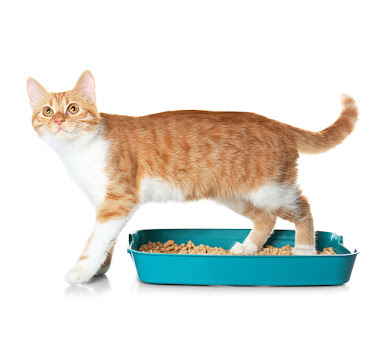With so many options available and so much varying information online, it can be easy to get influenced into buying certain products. But how do you know if that product is the right one for you and your cat? Let's review the important factors to consider when selecting cat litter for your kitty.
Understanding Your Cat’s Preferences
First, you need to understand your cat’s preference. Every pet is unique, and what works for one kitty may not be ideal for another. Before jumping in, take some time to consider and observe your cat. Does your cat prefer clumping or non-clumping litter? Is your cat sensitive to scents? Does your cat have respiratory issues? If you can understand your cat's preferences, it will help you narrow down your options and find the purrfect match.
Factors to Consider
There are a variety of factors to consider when choosing the best cat litter. There is not only your cat’s preferences, but your environmental and lifestyle preferences as well. Some factors may be more important to you than others, so let’s take a look at common concerns.
Odor Control: This is usually one of the most important considerations for cat owners, especially those in a smaller living space. If you are interested in odor control, look for litters with activated charcoal or other odor-absorbing ingredients to keep your home smelling fresh.
Dust Levels: Dusty litters can be irritating to both cats and humans. It may be preferable to opt for a low-dust, or even dust-free, option, especially if your cat has asthma or other respiratory issues, as inhaling litter dust has been known to exacerbate these conditions.
Tracking: Some litters are more prone to tracking than others. Choose litters with larger granules or heavier formulas if you want to minimize tracking around your house.
Environmental Impact: If sustainability is important to you, consider eco-friendly options made from biodegradable or renewable materials.
Budget: Cat litter costs can vary widely, so consider your budget when making your selection.
Types of Cat Litter
Now that you have reviewed the factors and can determine which are most important to you, you can look at the different types of litter to see if they meet your needs.
Clumping vs. Non-Clumping: Clumping litter forms solid clumps when wet, making it easier to scoop and maintain cleanliness. Non-clumping litter, on the other hand, absorbs moisture but does not clump together.
Scented vs. Unscented: Scented litter can help mask odors, but some cats may find the fragrance overwhelming. Unscented options are available for more sensitive noses.
Natural and Biodegradable Options: Eco-conscious cat owners may opt for litters made from materials like wood, paper, or corn, which are renewable and biodegradable.
Cat Litter Materials
There are a variety of brands and materials that are used for cat litter, and it seems like new ones are popping up every day. Let’s take a look at some of the most commonly used types.
Clay: This litter is made from clay materials and is probably the kind of litter someone pictures in their head when they think of a litter box. As the most commonly used type of litter, there are a lot of varieties when it comes to clumping, scent, and granule size. Clay litter is generally dusty and has smaller granules, so it may track outside the litter box. This litter should not be flushed.
Crystal: This litter is made from absorbent silica gel crystals that are usually formed as small, translucent beads. Crystal litter is considered low-maintenance as it lasts longer than clay litter and doesn’t need to be changed as frequently. This litter is dust-free, but some cats may be sensitive to the texture and it does not clump as well as other litters.
Paper: This option, made from recycled paper, is biodegradable and eco-friendly. It has good absorbency and is often low in dust, but needs to be changed more frequently and does not have much odor control.
Pine Pellets: This is an affordable litter option made from compressed pine wood pellets. It has natural odor control properties and a pine scent. Pine litter is biodegradable and can be composted after use. Some cats may not like the texture of pellets.
Walnut Shells, Coconut Husk, Corn, Wheat: These litters are generally biodegradable and environmentally friendly. They clump well and offer effective odor control, with minimal to no dust.
Making Your Decision
After considering all of these factors, it's time to make your decision. You can start by choosing a few options that meet your criteria and try them out. Remember to observe your cat's reaction and adjust as needed. With a little trial and error, you'll find the perfect cat litter that keeps both you and your beloved kitty happy!
Choosing the right cat litter is essential for maintaining a clean and odor-free litter box and keeping your cat comfortable and happy. As cat’s spend a lot of time in the litter box, you want to be conscientious of what you decide to expose them to.
Published: 4/5/2024
Author: Victoria Staton
Digital Content And Social Media Manager


